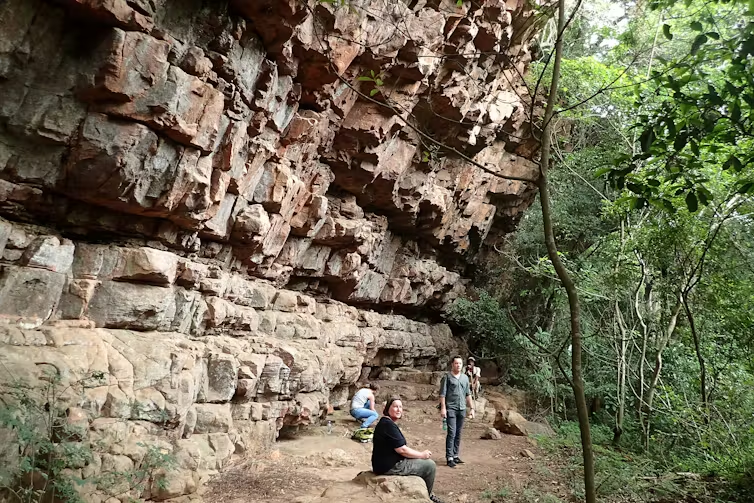The Thracians, an Indo-European-speaking people, inhabited large parts of Southeast Europe, primarily in modern-day Bulgaria, Romania, and northern Greece. Their origins are obscure, but they are believed to have descended from a mixture of Proto-Indo-Europeans and Early European Farmers. Around the 5th millennium BC, various indigenous groups in the eastern Balkans were collectively identified by the Greeks as Thracians. Thracian culture began to take shape during the early Bronze Age, flourishing in the 3rd and 2nd millennia BC and developing into distinct groups like the Getae and Dacians.
Origins and Early Development
The origin of the name 'Thracians' remains uncertain, with theories ranging from Greek mythology to various historical sources. Despite this ambiguity, it is clear that the Thracians had a deep-rooted presence in the Balkans, influencing regions that correspond to modern-day Romania, northern Greece, and Bulgaria. Archaeological evidence suggests that Thracian culture began to take shape during the early periods of human settlement in these areas. The Thracians were known for their strong cultural interactions with neighboring peoples, engaging in frequent trade and cultural exchanges that enriched their own society.
Interaction with Persians and Greeks
Thracians experienced significant cultural influences during Persian rule, particularly in their artifacts. However, coastal Thracians resisted Persian dominance and maintained trade links with the Greeks, leading to rich cultural exchanges. Greek historians often described Thracians as warlike and uncivilized, yet noted their sophisticated poetry and music. Thracian warriors were highly valued as mercenaries by both Greeks and Romans.
Rise of Thracian Elites and State Formation
In the 5th century BC, the Thracian elites, controlling vital resources like grain and minerals, consolidated power to form the Odrysian Kingdom. Seuthes the First played a significant role in integrating the kingdom’s economy and enhancing royal wealth. Despite this, the Thracians remained fragmented, which Greek and Roman sources noted as a reason for their inability to establish lasting political unity. However, they achieved significant military feats and territorial expansion during this period.
Macedonian Conquest and Thracian Independence
The Thracians faced subjugation by Philip of Macedon, becoming a vassal state. After Alexander the Great's death, they regained independence under the leadership of Seuthes III, with support from northern allies. This period of independence was marked by internal strife and external threats, particularly from neighboring tribes and empires.
One Of The Most Amazing Projects Ever: The Reviving Of The Submerged Ancient Thracian City Of Seuthopolis
Roman Conquest and Integration
Thracians were gradually incorporated into the Roman Empire in the mid-2nd century BC. Despite the Romanization of urban areas and infrastructure development, rural Thracians retained their indigenous culture and language for an extended period. The Thracians played a significant role in Roman military campaigns, notably the rebellion led by Spartacus, a Thracian gladiator.
Cultural and Religious Contributions
Thracian culture was rich and multifaceted, heavily influenced by interactions with Greeks, Persians, Scythians, and Celts. Their polytheistic religion included deities like Zalmoxis and Sabazios, with elements of Greek mythology. Thracian society was noted for its practice of tattooing and elaborate burial customs. Despite being perceived as barbarians by Greeks and Romans, the Thracians had a profound cultural impact, particularly in poetry and music.
Thracian Legacy and Archaeological Wonders
The Thracians made significant contributions to the cultural mosaic of the Balkans and the Eastern Mediterranean. During the late antique period, they were situated near Constantinople, the new capital of the Roman Empire, and experienced significant political and cultural shifts. The adoption of Christianity led to the construction of numerous churches in Thracian provinces, fostering urbanization and the Christianization of the region.
Archaeological findings have uncovered impressive Thracian artifacts, including ornate jewelry, weapons, and tombs, highlighting their craftsmanship and artistic achievements. These discoveries provide insight into the sophisticated nature of Thracian society, countering the ancient portrayals of them as primitive barbarians.
The Thracians were a formidable and influential ancient nation whose cultural and historical impact resonates through the ages. From their early developments and interactions with powerful neighbors to their integration into the Roman Empire, the Thracians exemplify a rich and dynamic chapter in the history of European and Asian civilizations. Their legacy, preserved through impressive archaeological finds and historical records, continues to fascinate scholars and enrich our understanding of the ancient world.








